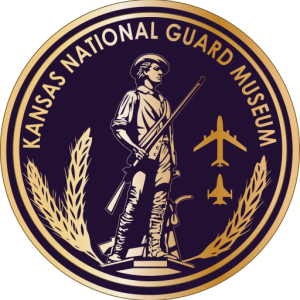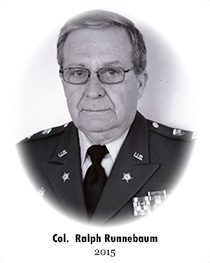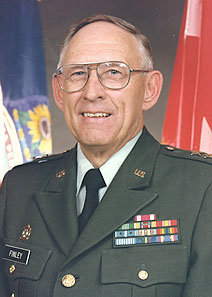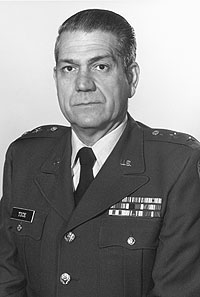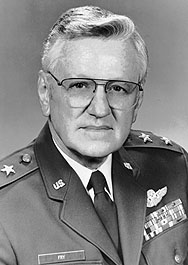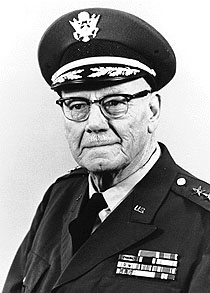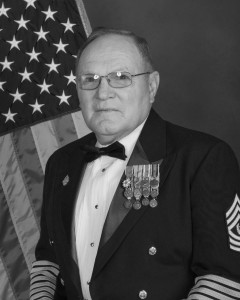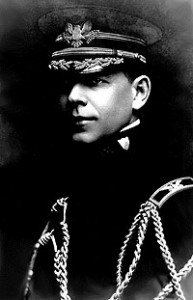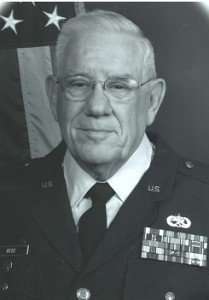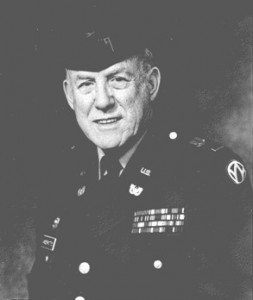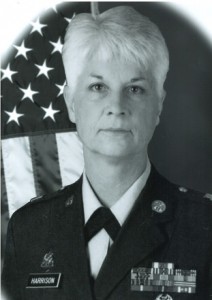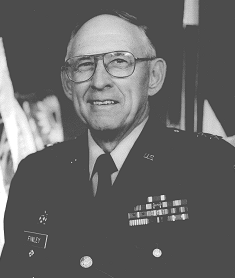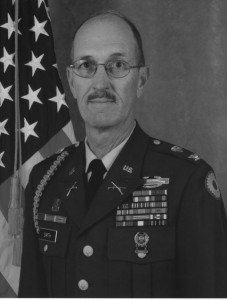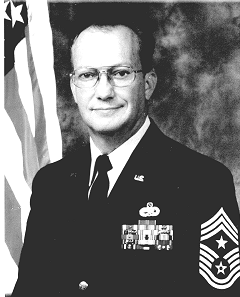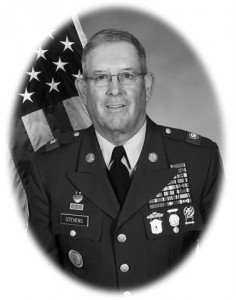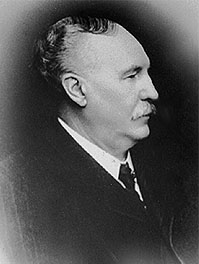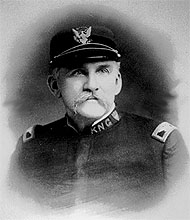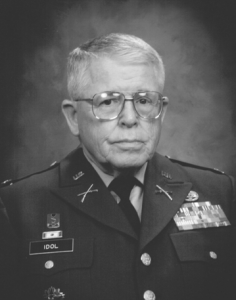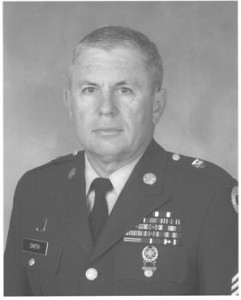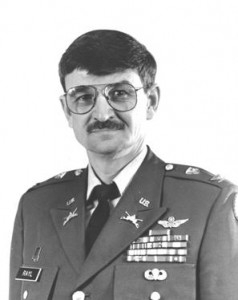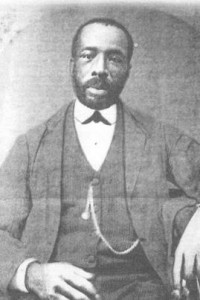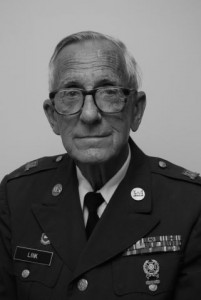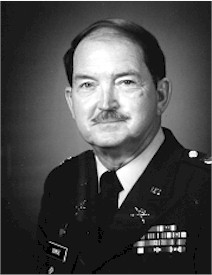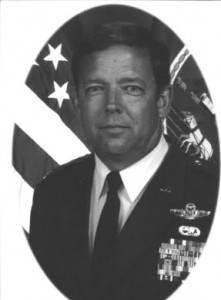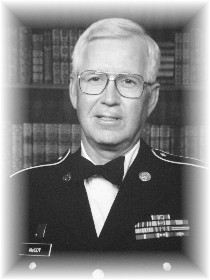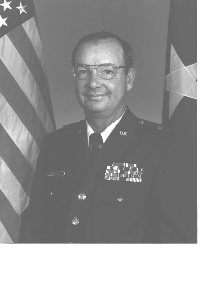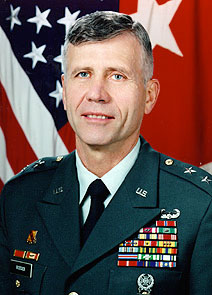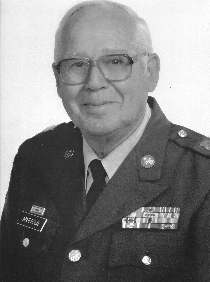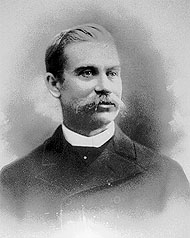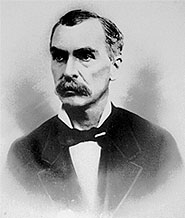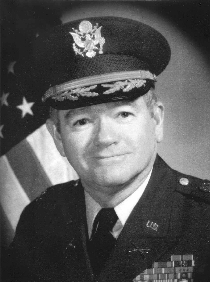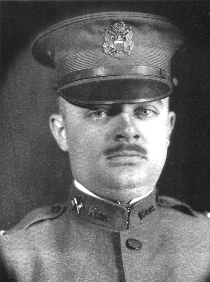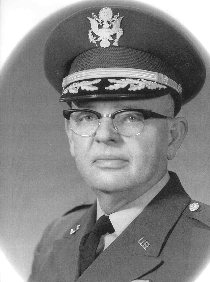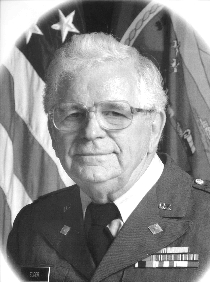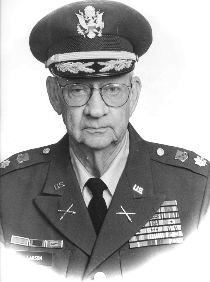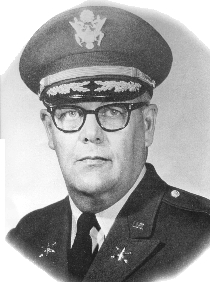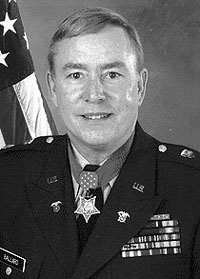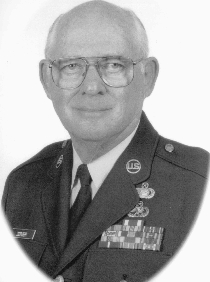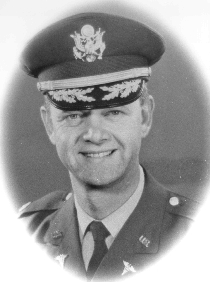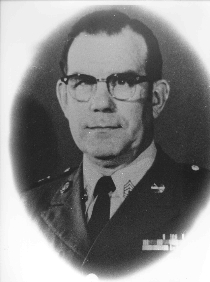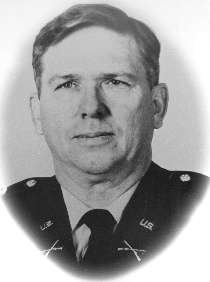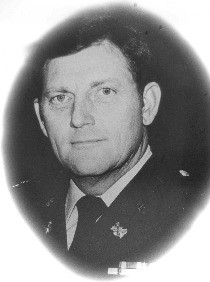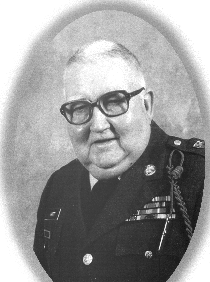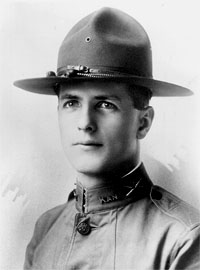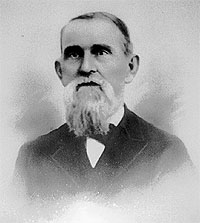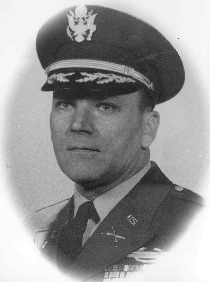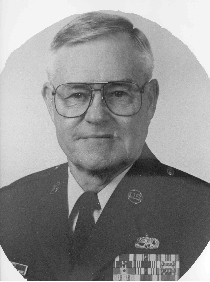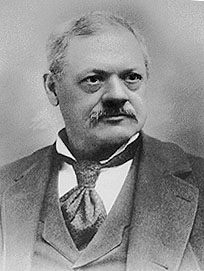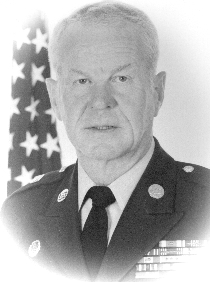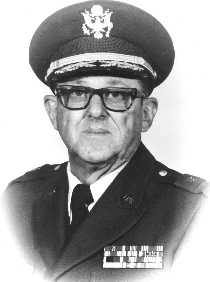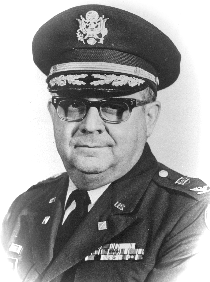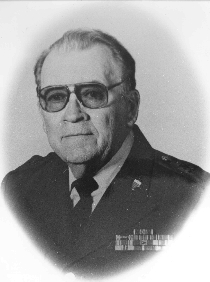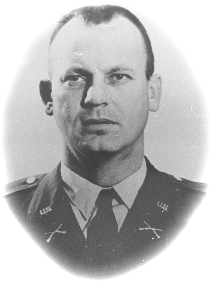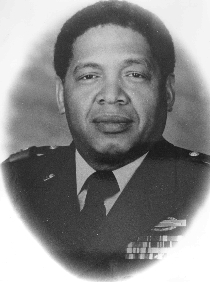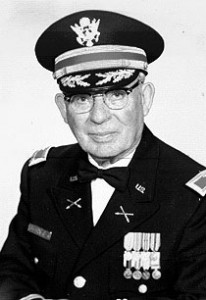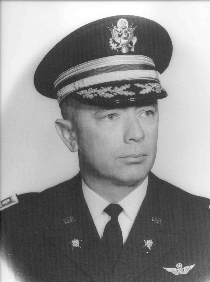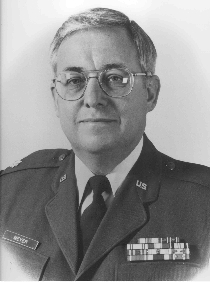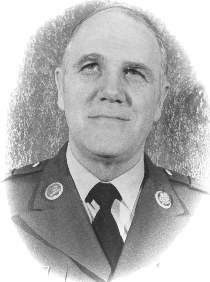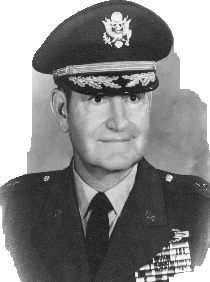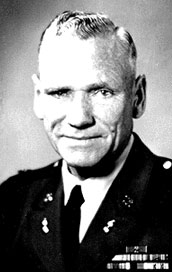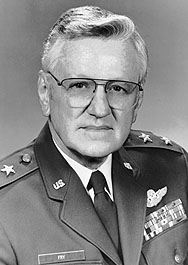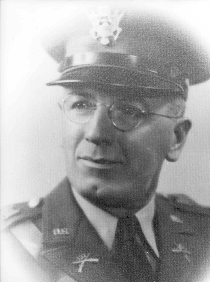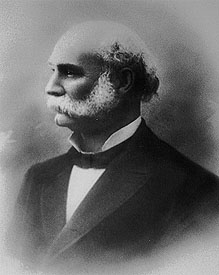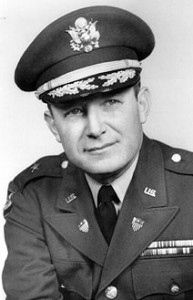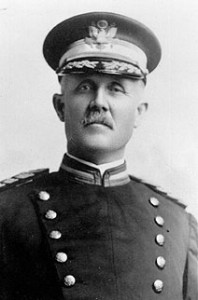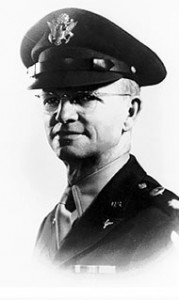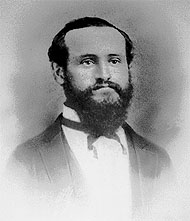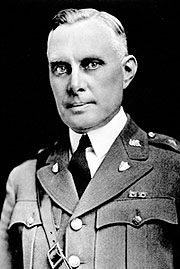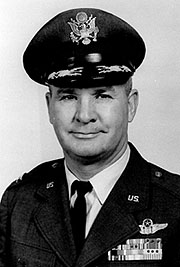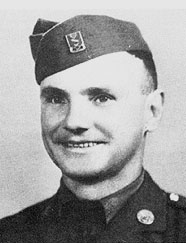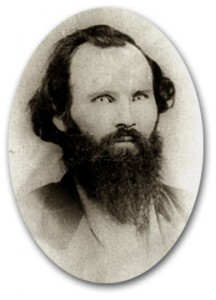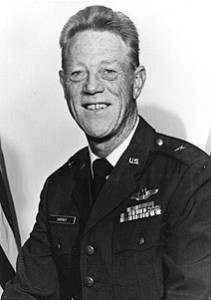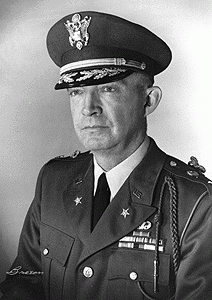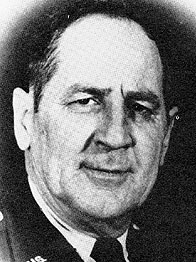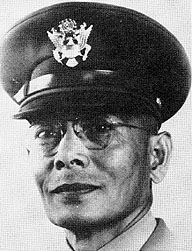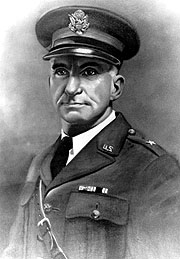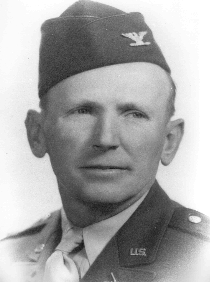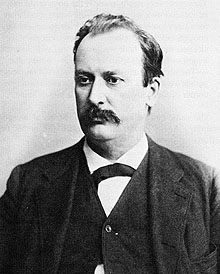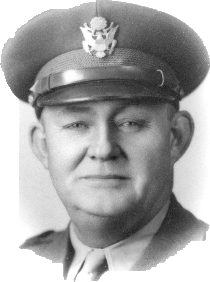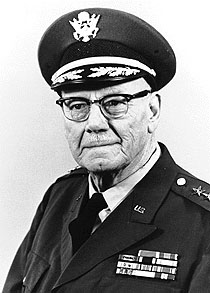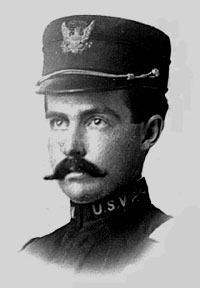The Seventh Kansas Cavalry was organized on the 28th day of October, 1861, at Fort Leavenworth, Kansas, under the command of Colonel Charles R. Jennison, and was immediately ordered into the field.
The regiment served during the fall and winter of 1861 and 1862 in Western Missouri, during which time it participated in many severe actions.
The first engagement in which the regiment was represented was fought the 11th of November, 1861, by companies A, B and H, under command of Lieutenant Colonel D. R. Anthony, with a rebel force outnumbering his four to one, commanded by the notorious Colonel Up. Hayes. The rebels were driven from their camp, but occupied a strong position just beyond, amongst the rocks and trees, on the hills along the Little Blue river. After a desperate fight, and being unable to dislodge the enemy from his naturally strong position, Colonel Anthony caused their camp to be destroyed. Having captured all the horses of the rebel command, Colonel Anthony with his force retired from the field. In this engagement the three companies lost nine men killed, and thirty-two wounded.
On the 31st day of January, 1862, the regiment moved to Humbolt, Kansas, where it remained until March 25, 1862, when it was ordered to Lawrence, Kansas. At the latter place, Colonel C. R. Jennison resigned, and the command devolved upon Lieut. Col. D. R. Anthony.
On the 22d of April the regiment was ordered to Fort Riley, Kansas, to outfit and prepare for a march across the Plains to New Mexico, but upon the eve of starting from Fort Riley, May 18, 1862, the order was countermanded, and the regiment ordered to report immediately at Fort Leavenworth, preparatory to moving south. On the 27th and 28th of May, 1862, the regiment embarked on board transports at Leavenworth, and was ordered to proceed via Pittsburgh Landing and report to General Halleck, who was then operating against Corinth, Miss. This order was changed, however, and the regiment disembarked at Columbus, Ky. It moved from this place, the 7th of June, 1862, as escort to working parties who were engaged in repairing the Ohio and Mobile railroad, and finally arrived at Corinth, Miss., July 10, 1862. The latter place was the extreme outpost of the army of the Mississippi. Here the regiment was assigned to the First Cavalry Brigade, commanded by Colonel Philip L. Sheriden, Second Michigan Cavalry, and remained at this post until its final evacuation, September 30, 1862. During this time the men were constantly in the saddle, and engaged in many severe cavalry skirmishes.
On the 17th day of July, 1862, Major Albert L. Lee was promoted to Colonel, and assumed command of the regiment.
Companies B and E represented the regiment at the battle of Iuka, Miss., September 18, 1862, and received special notice from General Rosecrans for bravery on the field and in the pursuit.
When Van Dorn’s advance upon Corinth was expected, the Seventh Kansas, with a portion of the Seventh Illinois Cavalry, were ordered out, under command of Colonel A. L. Lee, on a reconnaissance, and developed the intended movement. Colonel Lee passed to the rear of the advancing rebel column, and continued to harass him until the night of the 3d of October, when the Third Michigan Cavalry arrived, and the command moved around the flank of the enemy and passed into Corinth in time to take part in the final terrible battle on the 4th. On the entire pursuit from Corinth the Seventh Kansas Cavalry held the advance, and killed and captured a large number of the enemy. The pursuit was continued to Ripley, Miss.
From thence the regiment returned to Corinth, where it remained a few days in camp, when it joined a cavalry expedition, under the command of Colonel A. L. Lee, into Alabama.
The Seventh Kansas Cavalry crossed Bear Creek in the advance, drove Roddy’s rebel command from Buzzard Roost Station, and killed and captured a number of the rebels. Here the expedition was discontinued, and the command returned to Corinth, From thence it moved immediately to Grand Junction, Tennessee, where it joined General Grant’s army , which was concentrating at that place. The rebel army, under command of General Pemberton, was then encamped at Cold Water, twenty miles south toward Holly Springs.
On the 8th of November reconnaissance was made by the cavalry, under the command of Colonel Lee. The Seventh Kansas Cavalry had the advance, and near Lamar met a column of rebel cavalry, about six thousand strong, under the command of General Jackson, the rebel Chief of Cavalry. After a spirited skirmish, a portion of the regiment made a flank movement and attacked the rebel flank. Company E, commanded by Captain Charles H. Gregory, made a gallant charge, stampeded the entire rebel command, who fled in the utmost confusion, leaving over twenty of his dead, and three hundred wounded and prisoners. This defeat caused the retreat of the entire rebel command beyond Holly Springs.
A subsequent raid was made by Colonel Lee to Holly Springs on the 28th of November. In this engagement the Seventh Kansas Cavalry had the advance, and charged into town and completely routed the rebel garrison.
On the 27th of November the entire army moved forward, the Seventh regiment occupying the extreme advance of the command a greater portion of the time during the campaign, and skirmished the entire way from Holly Springs, Miss. The regiment performed signal service at the Tallahatchie, and was the first to cross the river after the rebels evacuated their stronghold. The regiment led the advance into Oxford, Miss., which was gained after very severe fighting. It was the first into Water Valley, and also occupied the advance at Coffeyville, and was engaged in the hottest of that battle, where four thousand cavalry, thirty miles in advance of the infantry column, engaged ten thousand rebel infantry, and only fell back from the field when nearly surrounded. The command brought off all the artillery in safety, leaving none but the dead behind it.
The regiment then moved back with the cavalry command to Water Valley, where it remained until December 15, 1862, when it was again ordered out in pursuit of Van Dorn, who was moving with a rebel column upon Holly Springs. The regiment marched day and night, but failed to reach the place in time to participate in the engagement and save the place, the town having been captured and the Government stores destroyed in the day before its arrival.
The pursuit was continued into Tennessee, and Van Dorn’s forces driven as far as Pontotoc, Miss., with a loss to him of many prisoners. The regiment returned to Holly Springs, where it remained until the 31st of December, when it moved to Moscow, Tenn., and was stationed along the line of the Memphis and Charleston railroad, and remained guarding the road until April 14, 1863, a greater portion of the time at Germantown, Tenn. At this place, Colonel A. L. Lee received notice of his promotion to Brigadier General, and took leave of the regiment and the command devolved upon Lieut. Col. T. P. Herrick.
From Germantown the regiment returned to Corinth, Miss., where it arrived on the 17th of April. The following morning the regiment was ordered to join a force under command of General G. M. Dodge, who was concentrating his forces at bear Creek, Ala. On the 23d of April the army moved. On the 24th of April, the regiment moved upon Tuscumbia, Ala., charged the rebel brigade under command of General Roddy, and drove him from the town. The charge was immediately followed by the advance of the cavalry, under command of Col. F. M. Cornyn, tenth Missouri Cavalry. The enemy was overtaken several miles beyond, where the memorable cavalry battle of Leighton was fought.
In the meantime Roddy’s command was reinforced by a portion of Forrest’s cavalry, from the north side of the river, and outnumbered Cornyn’s brigade two to one. Notwithstanding the great odds with which they had to contend, the enemy was driven ten miles and thoroughly whipped. In the engagement Captain Utt, of company A, lost a leg whilst gallantly leading his company in a charge upon a rebel battery. On the following day the command moved back to Tuscumbia. On the 27th of April a second advance was made, and a heavy engagement took place at Town Creek. The enemy occupied a strong position on the opposite side of the creek, but was finally driven from the field. From this place the command moved back, and the infantry marched directly to Corinth. The cavalry turned off at Burnsville and moved south, for the purpose of attracting the attention of the rebels from Colonel Grierson, who had just started on his celebrated raid through Mississippi. After severe skirmishing a greater portion of the way, the brigade arrived at Tupelo, Miss., on the 5th of May, succeeded in driving the rebels from the town, and occupied the place. In the afternoon a force of rebel cavalry was reported advancing on the town. A portion of the Seventh Kansas Cavalry was immediately sent out, dismounted, to meet them. As they advanced through the timber, they came suddenly upon the rebel line, just as it was forming, a little beyond the opening and immediately opened a heavy fire upon the rebel ranks, which sent them flying in great confusion, killing and wounding a large number. The Tenth Missouri Cavalry charged the enemy, mounted, and captured a number of prisoners. In the meantime, the rebel General Gholson, with four thousand militia, charged from the south, intending a surprise, but the charge was gallantly met by three companies of the Seventh Kansas Cavalry, and a battery of light artillery–howitzers–of the Tenth Missouri Cavalry, and after severe fighting, succeeded in repulsing the charge of the enemy, driving him from the field, completely demoralized, with a heavy loss to the rebels in prisoners.
The regiment was stationed at Corinth from the 9th of May, 1863, until the 8th of January, 1864, was almost constantly in the saddle, and participated in many severe actions. On the 11th day of June, 1863, Lieutenant Colonel Herrick was mustered as Colonel.
On the 26th of May Colonel Cornyn moved with a cavalry force, consisting of the Seventh Kansas, Tenth Missouri, one battalion of the Fifteenth Illinois, and the Ninth Illinois Mounted Infantry. The command crossed the Tennessee river the same night, and moved rapidly towards Florence, Ala., the Seventh Kansas taking the advance. About ten miles from Florence a rebel force was encountered, but was easily driven to the outskirts of the town, where a large rebel force was drawn up in line of battle, and a battery, posted on the hill, immediately opened fire upon the advance. After a severe engagement, the enemy was routed, driven back through town, and the place captured. A vast quantity of stores and ammunition were captured and destroyed.
The command then moved by a road to the south the same night, the Seventh regiment occupying the advance. A short distance beyond the extreme picket post, a force of rebel cavalry was encountered, and a severe skirmish ensued, which caused the rebels to fall back slowly. Sever fighting was continued until nearly morning, when the rebel force in front having been nearly all captured, the enemy ceased troubling. The command then moved direct to Hamburg, on the Tennessee river. While the command was crossing the river an attack was made on the rear, but was soon repulsed, and no further difficulty was experienced. On the 31st of May the regiment returned to Corinth, having marched night and day for six consecutive days.
During the summer and fall of 1863, the regiment was engaged in many severe skirmishes. On the 9th of July the regiment took part in a cavalry engagement near Iuka, Miss. Cornyn’s brigade encountered a rebel force under command of Gen. Roddy, which resulted in the defeat of the enemy with heavy loss.
On the 30th of September companies A and C attacked the rear guard of a rebel force whilst crossing the Tennessee river at Swallow’s Bluff, and after a spirited engagement, succeeded in capturing a number of the enemy before they could cross to the east side of the river.
On the 12th of October the regiment was engaged in the battle of Byhalia and Wyatt, Miss., which was fought by the cavalry division under the command of Colonel Hatch with a rebel force under command of General N. B. Forrest. The latter was defeated with heavy loss, and driven across the Tallahatchie river. In this engagement, Captain Amasa Hodgman, company H, was mortally wounded and captured, while gallantly leading a charge against a very strong position, and died in the hands of the enemy, October 16, 1863.
On the 1st of December the regiment again engaged the rebel force under command of General Forrest at Ripley, Miss., having been sent out to retard the rebel column, then moving towards the Memphis and Charleston railroad. In this engagement, Lieutenant Colonel W. S. Jenkins was severely wounded in the head.
On the 24th of December a battalion of the Seventh Kansas encountered and defeated a detachment of Forrest’s command near Jack’s Creek, Tenn.
On the 1st of January, 1864, while the regiment was bivouacked near La Grange, Tenn., without any shelter to protect them from the sleet and cold, and many of them suffering severely from frozen feet, notwithstanding the suffering, over four-fifths of the Seventh Kansas re-enlisted as Veteran Volunteers, the first to re-enlist in the District of West Tennessee.
On the 18th day of January the camp was broken up at Corinth, and the regiment ordered to Memphis, where the veterans were re-mustered, January 21, to date January 1, 1861, from whence it proceeded to Leavenworth, Kan., where it arrived on the 4th day of February, and was furloughed for thirty days.
Immediately after the regiment re-assembled at Leavenworth, (March 12, 1864), it was ordered to Memphis, Tenn., but upon its arrival at St. Louis, the order was changed, and it remained there until re-equipped. After having been outfitted anew, it proceeded, June 6, to Memphis, Tenn.
On the 17th of June the regiment left Memphis as escort to working parties who were engaged in repairing the Memphis and Charleston railroad. On the 5th of July it moved south from La Grange in advance of General A. J. Smith’s infantry column, which was advancing against the rebel force under command of Forrest. The regiment continued in the advance, ( the rest of the cavalry operating on the flanks), until the arrival of the command at Pontotoc., Miss., where the rebel command under Forrest was entrenched on Cherry Creek, six miles below the town. After making some demonstrations, as if to attack, Gen. Smith, on the 12th of July, sent the cavalry in the advance, except the Seventh Kansas, which he retained as rear guard, and moved east with his command towards Tupelo. Forrest immediately followed, and pressed heavily upon the rear. The regiment was constantly engaged on the 13th from 5 o’clock a. m. until 8 o’clock p. m., and at times was compelled to hold in check the entire force of the enemy.
On the 14th and 15th of July the battle of Tupelo was fought. The Seventh regiment occupied a position on the right flank, but was not heavily engaged. Immediately after the battle, Gen. Smith returned with his command to La Grange.
On the16th of July the regiment, whilst acting as rear guard, had a spirited engagement with the Second Missouri (rebel) Cavalry at Ellistown, in which it lost several men.
On the 1st of August, General Smith again moved against the rebel command under Forrest, in which expedition the regiment took conspicuous part, and was engaged in all the principal actions during the campaign, including the crossing of the Tallahatchie, on the 8th of August, the capture of Oxford on the 9th, and the severe battle of Hurricane Creek, on the 16th of the same month.
Soon after the expedition returned to Memphis, the regiment received orders to report to General Rosecrans at St. Louis, where it arrived on the 17th of September, 1864.
The regiment, under command of Lieutenant Colonel F. M. Malone, took an active part in the campaign in Missouri against the rebel General Price, during the fall of 1864, and participated in all the principal engagements. At Independence, Mo., the regiment charged against a superior force of the enemy, and succeeded in completely routing them and captured two pieces of artillery.
After the campaign against Price, the regiment was stationed by detachments in St. Louis District, where it was employed in fighting guerrillas until the 18th of July, 1865, when it was ordered to report at Omaha City, N. T., where it arrived on the 31st of the same month, and from thence marched to Fort Kearney. The regiment, however, had scarcely reached the latter station, when it received orders to return to Fort Leavenworth, Kansas, to be mustered out of service, where it arrived on the 14th of September, 1865, and on the 29th of the same month received its final discharge, after having served a term of three years and eleven months from the time of its organization until its final muster out of service.
The aggregate distance marched, as shown by the records of the regiment, exclusive of the distance traveled on transports and by rail, is twelve thousand and fifty miles–a no inconsiderable journey when it will be remembered how many weary miles were traveled beneath a scorching southern sun or through winter’s rain and sleet.
(SOURCE: Report of the Adjutant General of the State of Kansas, 1861-’65. Topeka, Kansas: 1896 reprint. Transcription provided by Dale Vaughn, Civil War Round Table of Eastern Kansas.)

 Maj Gen David Weishaar
Maj Gen David Weishaar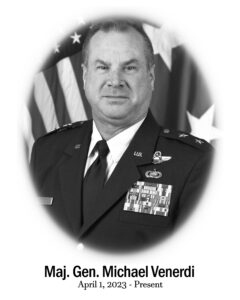
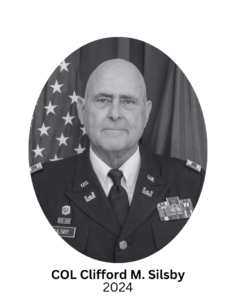
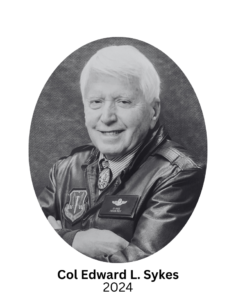
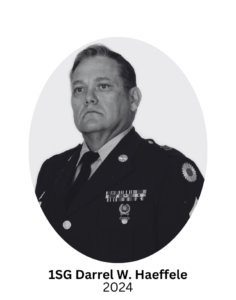 First Sergeant Darrel W. Haeffele was born on September 25, 1940, in Falls City, Nebraska. He graduated from Atchison High School in 1958. He attended Concordia College in Seward, NE for two years before starting a career in retail.
First Sergeant Darrel W. Haeffele was born on September 25, 1940, in Falls City, Nebraska. He graduated from Atchison High School in 1958. He attended Concordia College in Seward, NE for two years before starting a career in retail.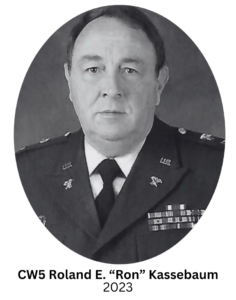 CW5 Roland E. “Ron” Kassebaum was born on February 21, 1946 in Deshler, Nebraska. He graduated from Hebron High School, Hebron, Nebraska in 1964. He attended Fairbury Junior College, Fairbury, Nebraska and the University of Nebraska, Lincoln, Nebraska, and received a Bachelor of Science Degree from the University of the State of New York in 1991. He later attended Liberty University, Lynchberg, Virginia, for courses in accounting and Allen County Community College, Iola, Kansas, for a course in Business Law.
CW5 Roland E. “Ron” Kassebaum was born on February 21, 1946 in Deshler, Nebraska. He graduated from Hebron High School, Hebron, Nebraska in 1964. He attended Fairbury Junior College, Fairbury, Nebraska and the University of Nebraska, Lincoln, Nebraska, and received a Bachelor of Science Degree from the University of the State of New York in 1991. He later attended Liberty University, Lynchberg, Virginia, for courses in accounting and Allen County Community College, Iola, Kansas, for a course in Business Law.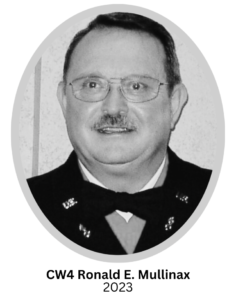 Chief Warrant Officer Four Ronald E. Mullinax was born on August 25, 1946, in Norton, Kansas to Earl and Mary Posson. He was adopted by John and Ada Mullinax. He grew up in Lenora, Kansas, graduating from Lenora Rural High School in 1965. After completing a Denver Automotive Institute training program, Ron worked at Look Body Shop in Norton until 1968.
Chief Warrant Officer Four Ronald E. Mullinax was born on August 25, 1946, in Norton, Kansas to Earl and Mary Posson. He was adopted by John and Ada Mullinax. He grew up in Lenora, Kansas, graduating from Lenora Rural High School in 1965. After completing a Denver Automotive Institute training program, Ron worked at Look Body Shop in Norton until 1968. CCMSgt Valerie D. Benton was born on Dec. 10, 1959 in Racine, Wisconsin, where she spent her childhood. She graduated from Washington Park High School in 1978. Soon after graduation she enlisted in the U. S. Air Force and headed to Basic Training at Lackland AFB, Texas in December of 1978. After completion of Basic training, she attended Technical Training at Lowry AFB, Colorado, and graduated as a Food Service Specialist.
CCMSgt Valerie D. Benton was born on Dec. 10, 1959 in Racine, Wisconsin, where she spent her childhood. She graduated from Washington Park High School in 1978. Soon after graduation she enlisted in the U. S. Air Force and headed to Basic Training at Lackland AFB, Texas in December of 1978. After completion of Basic training, she attended Technical Training at Lowry AFB, Colorado, and graduated as a Food Service Specialist.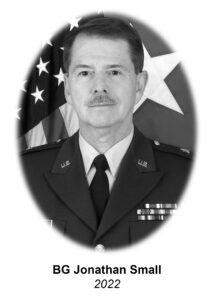 Brigadier General Jonathan P. Small served as The Adjutant General of Kansas from November 1, 2003 to January 4, 2004, culminating a 35-year military career as a distinguished attorney, community leader, citizen-soldier, and military leader. He served as Assistant Adjutant General-Army from 1999 to 2003, and as Commander of the Land Component for the Joint Force Headquarters-Kansas.
Brigadier General Jonathan P. Small served as The Adjutant General of Kansas from November 1, 2003 to January 4, 2004, culminating a 35-year military career as a distinguished attorney, community leader, citizen-soldier, and military leader. He served as Assistant Adjutant General-Army from 1999 to 2003, and as Commander of the Land Component for the Joint Force Headquarters-Kansas. General James H. Lane was a militia leader during the Bleeding Kansas period, the commander of the Kansas “Jayhawker” Brigade during the Civil War, and was one of the first United States Senators from Kansas.
General James H. Lane was a militia leader during the Bleeding Kansas period, the commander of the Kansas “Jayhawker” Brigade during the Civil War, and was one of the first United States Senators from Kansas.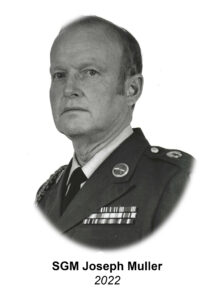 Sergeant Major Joseph T. “Jody” Muller was selected for the Kansas National Guard Hall of Fame for his exceptional service as a citizen soldier in the Kansas National Guard for over 41 years.
Sergeant Major Joseph T. “Jody” Muller was selected for the Kansas National Guard Hall of Fame for his exceptional service as a citizen soldier in the Kansas National Guard for over 41 years.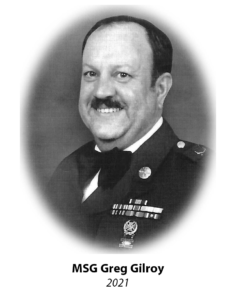 Master Sergeant Greg Gilroy was born on July 25, 1947 at Ottawa, Kansas. He was a lifelong resident of Ottawa, graduating from Ottawa High School in 1965. He then attended Emporia State University during the 1965-66 school year.
Master Sergeant Greg Gilroy was born on July 25, 1947 at Ottawa, Kansas. He was a lifelong resident of Ottawa, graduating from Ottawa High School in 1965. He then attended Emporia State University during the 1965-66 school year.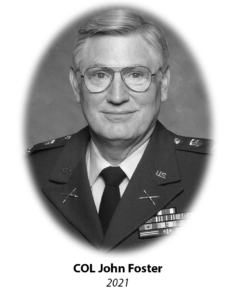
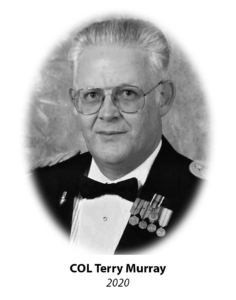
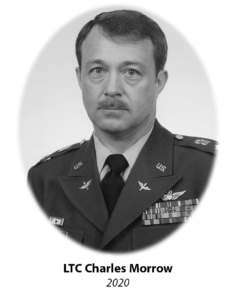

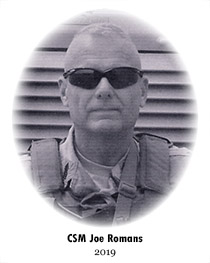
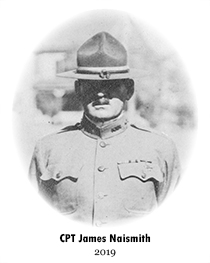

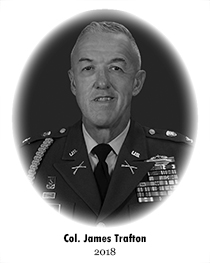
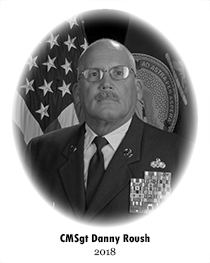
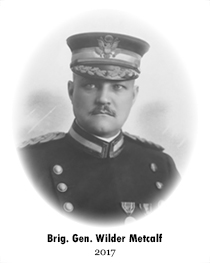
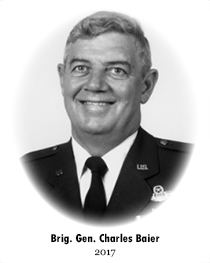
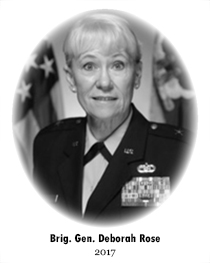 Brigadier General Deborah Rose entered military service with a direct commission into the United States Air Force Nurse Corps in March 1983, assigned to the 184th Tactical Fighter Group. She transferred to the 190th Clinic in December 1985. In October 1990, she deployed to Jeddah, Saudi Arabia, where she served in an Air Transportable Hospital during Desert Shield. In February 1991, she was activated and deployed to Offutt AFB, Nebraska, assigned to the hospital.
Brigadier General Deborah Rose entered military service with a direct commission into the United States Air Force Nurse Corps in March 1983, assigned to the 184th Tactical Fighter Group. She transferred to the 190th Clinic in December 1985. In October 1990, she deployed to Jeddah, Saudi Arabia, where she served in an Air Transportable Hospital during Desert Shield. In February 1991, she was activated and deployed to Offutt AFB, Nebraska, assigned to the hospital.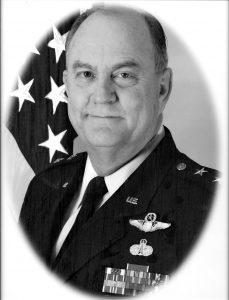
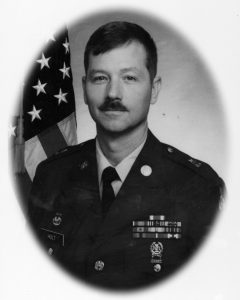 Sergeant Major Lynn E. Holt built his distinguished Kansas Army National Guard career developing strength, retaining Soldiers and insuring Soldiers received proper training. He served from the Detachment through State level. He is known for his ability to recognize Soldier needs at all levels. The same care he felt for Soldiers carried over into his community activities. SGM Holt’s passion for people and their needs exemplifies his true character. He devoted his entire adult life to the betterment of our nation, our state and the Kansas National Guard.
Sergeant Major Lynn E. Holt built his distinguished Kansas Army National Guard career developing strength, retaining Soldiers and insuring Soldiers received proper training. He served from the Detachment through State level. He is known for his ability to recognize Soldier needs at all levels. The same care he felt for Soldiers carried over into his community activities. SGM Holt’s passion for people and their needs exemplifies his true character. He devoted his entire adult life to the betterment of our nation, our state and the Kansas National Guard.